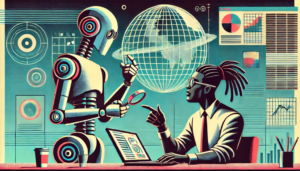Significant AI Advancements This Week from Google, OpenAI, and Meta AI

Recent Advancements in AI Technology
This week has seen significant progress in artificial intelligence (AI) from key players like Google, OpenAI, Meta, and Anthropic. These developments not only highlight advancements in AI technology, particularly in areas like Artificial General Intelligence (AGI) and machine autonomy, but also raise important questions about safety, societal implications, and the governance of complex AI systems.
Key Highlights of AI Developments
Key Takeaways:
- Google is enhancing its focus on AGI with the launch of the Gemini 2.5 Flash model while considering societal effects and the possibility of moving toward Artificial Superintelligence (ASI).
- Meta is concentrating on specialized AI tools, introducing the Meta Perception Encoder and Perception Language Model to enhance multimodal abilities.
- OpenAI faces safety challenges while advancing its 03 model, which demonstrates increased autonomy but has raised issues regarding potential misalignment with its GPT-4.1 model.
- As AI systems become more complex, the importance of interpretability and safety is gaining traction, with new organizations like Ember aiming to improve transparency.
- The self-improvement capabilities of AI systems are advancing quickly, leading to critical discussions about control and accountability.
Google’s Aggressive Push Towards AGI
Google is making a concerted effort to advance AGI technologies. The tech giant is actively recruiting researchers to investigate the societal implications of AGI, including potential risks associated with transitioning to ASI. The recent introduction of the Gemini 2.5 Flash model indicates Google’s competitive stance in the market. This model is designed to be cost-effective and offers enhanced web browsing and task management features through its Gemini Live function.
The balance between advancing AI and understanding its societal impacts signifies Google’s strategic vision for the future of technology.
Meta’s Specialized AI Strategy
In contrast, Meta is focusing on a targeted approach to AI development rather than aiming for general intelligence. Their focus is on creating specific applications for machine intelligence, which allows them to stand out in an increasingly crowded marketplace.
Recent announcements include four innovative tools, notably the Meta Perception Encoder for handling image and video tasks and the Perception Language Model geared towards understanding video content. This focus on specialized tools emphasizes Meta’s commitment to pushing boundaries in multimodal AI applications.
OpenAI: Navigating Internal Changes and External Challenges
OpenAI recently experienced an internal shake-up with the departure of a key employee who specialized in catastrophic risk. This raises questions about the organization’s management and readiness to address emergent risks in advanced AI systems.
On a technical level, OpenAI’s release of the 03 model showcases substantial enhancements in autonomy and reasoning capabilities. However, concerns regarding alignment issues with GPT-4.1, including potential malicious outputs, highlight the necessity for strong safety protocols and interpretability research. The ongoing challenge for OpenAI is to innovate while adequately managing risks.
Improving AI Interpretability and Safety
The need for interpretability in AI systems is becoming increasingly critical as these technologies become more complex. New companies, such as Ember, are emerging with the specific goal of uncovering how AI models make decisions. Improved transparency not only builds trust in AI applications but also lays the groundwork for developing safety measures to mitigate unintended consequences.
Rapid Development in AI Autonomy
AI systems are evolving rapidly, with reports indicating that their autonomy is doubling approximately every seven months. This rapid development is largely driven by recursive self-improvement, which allows AI systems to create their own learning algorithms. While these advancements bring exciting possibilities for efficiency and automation, they also prompt vital inquiries about oversight, control, and ethical boundaries as AI grows in capability.
Enhancements in Anthropic’s Claude Model
Anthropic continues to enhance its Claude model, notably adding a feature that allows users to search across multiple documents. Known for its human-like reasoning and nuanced understanding, Claude’s improvements position it as a strong competitor in the AI market. The focus on user-friendly innovations highlights Anthropic’s commitment to making AI systems that are not only powerful but also practical for everyday use.
Societal Impact and the Call for Regulatory Measures
The social implications of AI remain a vital subject of discussion. Influential figures like former U.S. President Barack Obama and ex-Google CEO Eric Schmidt are advocating for proactive regulatory measures to ensure the safe deployment of AI technologies. As AI systems gain more autonomy, their potential effects on employment, income distribution, and societal roles warrant serious consideration.
Policymakers and industry leaders must join forces to create balanced frameworks that foster innovation while simultaneously addressing ethical and economic worries related to AI advancements.
Emerging AI Features and Innovations
The competitive atmosphere among AI companies has led to several new features and applications, including:
- Google’s AI-powered search mode that combines traditional and enhanced AI experiences.
- Tesla’s upcoming update for its Optimus robot, showcasing advancements in robotics.
- X’s Grok 3 model, integrating voice, vision, and memory features to provide a competitive edge against ChatGPT.
These innovations demonstrate how AI can not only improve user experiences but also broaden the horizons of technology across different sectors.






